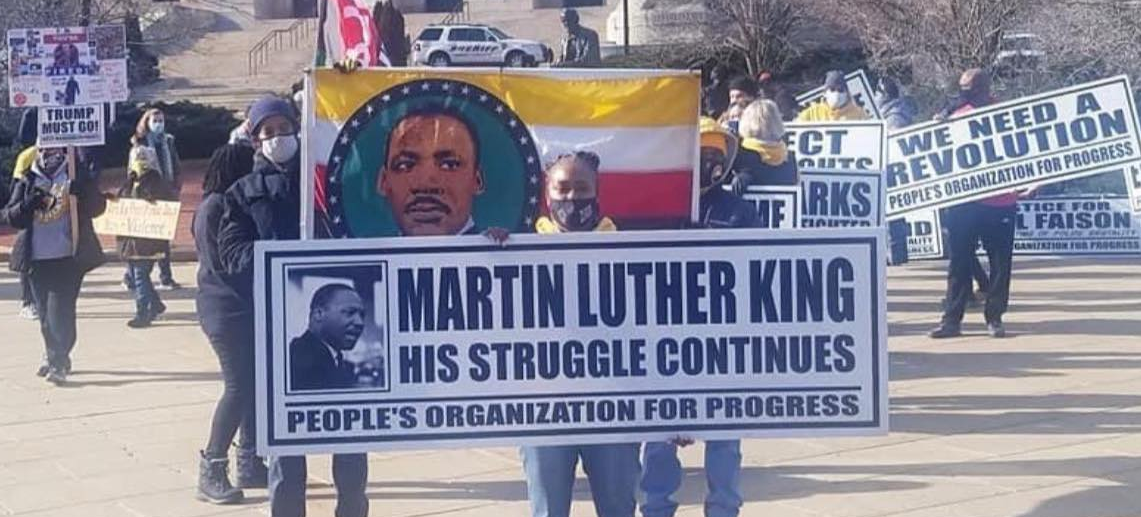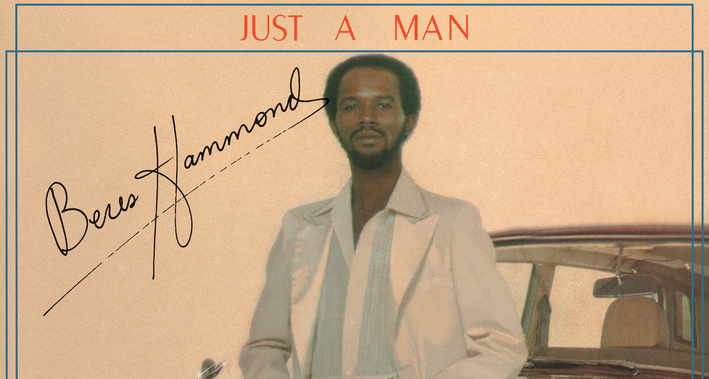The World Stage
[Beneath The Spin]
I was born in Los Angeles, so as I gazed upon the representation of the shiny new edifices that’s envisioned as the NEW Leimert Park, I was saddened and felt a profound sense of loss.
All those impressive and shiny buildings didn’t fool me for a minute, because I’ve seen it before. What I saw was, yet again, the comfort and cultural moorings of the Black community being shoved to the side for the convenience of those who are already far too rich, far too influential, and far too powerful. Thus, the planned destruction of Leimert Park – and let there be no doubt about it, that’s exactly what it is – is metaphorically symbolic of a society that’s become hell-bent on giving the whims of the wealthy priority over the needs of the people.
A community is far more than just a place where people sleep; it’s a place of comfort, and its familiarity serves to sustain the sense of well-being of the people who live there. But in addition to that, Leimert Park represents much more to the Black community. In the past it represented a symbol of Black upward mobility. It stood as a people-friendly and aesthetically pleasing Black middle-class community that reached out to aspiring young Black people to say, “Yes you can!,” and as a result, many of us did.
BLACK CULTURAL HISTORY – AND FUTURE – UNDER ATTACK
Leimert Park also represents a longstanding source of Black cultural development, and “The World Stage” – which they plan to casually relegate to the dustbin of history – has long been the centerpiece of that cultural development. So the fact is, it would be nothing short of a cultural atrocity to look upon the World Stage as just another building to be demolished to make room for progress.
The World Stage is not just a building, it’s a Black cultural Oasis for musicians, writers, poets, visual artists, and other creative spirits in a Black community where such gathering places are already far too rare.
The World Stage was founded as a gift of love to the community by poet, Kamau Daáood, and the late drummer and jazz great, Billy Higgins – a name that resonates throughout the world as one of the premier icons in the annals of jazz – nearly twenty-five years ago. That fact alone, should merit the World Stage being recognized as a cultural – and even national – landmark worth preserving. That would have certainly been the case had it been founded, loved, and nurtured by Elvis Presley.
Billy Higgins was born in Los Angeles on October 11, 1936, and became world renowned as one of the greatest, most respected, and most swinging drummers in the history of jazz. He became the house drummer for the world-famous Blue Note Records (the Motown of jazz), made over 700 recordings, and played with the greatest names in jazz. Just a few of those names were, Dexter Gordon, Jackie McLean, Sonny Rollins, Hank Mobley, Gene Ammons, Sonny Stitt, Joe Henderson, Freddie Hubbard, Lee Morgan, and too many more to mention.
Billy Higgins represented Los Angeles proudly around the world, yet, he still found the time in his furiously busy career to partner with poet, Kamau Daáood, to establish The World Stage Cultural Center as a contribution and gift of love to his community, a contribution that the City of Los Angeles is now poised to casually brush aside like a speck of lint on a brand new suit.
I literally stumbled upon this situation when singer, Rita Edmond, approached me to do a little research on the planned Metro Rail System and its impact on Leimert Park and the World Stage. She asked me to look into who’s behind what’s taking place, and while researching the issue I found what seemed to be some very interesting machinations going on behind the scenes.
I found it very interesting that Sup. Mark Ridley-Thomas requested a tunnel and station in Leimert Park (on Vernon and Crenshaw) instead of on Slauson and Crenshaw (as planned), in spite of the fact that it would cost an additional $219 million, and that he and Tavis Smiley and Cornel West teamed up in 2011 to do a news conference to promote the plan.
That alone immediately caught my interest, because as anyone knows who’s familiar with my writings, I don’t trust Smiley and West as far as I can throw a two-ton anvil. When Smiley’s name popped up, the first thought that came to my mind was the Wells Fargo “Ghetto Loan” scam, and when he tried to help shove a Walmart store (his close supporter) down the throats of the people of Inglewood against their will, knowing full well that Walmart is renowned for putting small local businesses out of business everywhere they go.
Also interesting is Cornel West’s stake in this matter. He’s not from Los Angeles, so what does he have to do with this issue? Another interesting point regarding Cornel West is he was personally involved in saving John Coltrane’s former home in Dix Hills, New York from the wrecking ball, to be preserved as a museum. That was a good thing; but why would he work to preserve one jazz icon’s former home as a museum on the East Coast, and work to destroy another jazz icon’s gift of love to his community on the West Coast? After all, John Coltrane only lived in the house that they saved for three years, while the house that Billy built (The World Stage) has been serving the community for nearly twenty-five years. It would be interesting to hear Cornel’s rationale on that issue.
So we need to find out exactly why Ridley-Thomas made his request for a change of plans, what impact his suggested change of route is going to have on Leimert Park, and exactly what stake Tavis Smiley has in this matter. Would Degnan – and it’s attendant businesses – have been spared if the suggested change had not been made, and how does his change benefit the people of Leimert Park?
And this bears repeating – does the change have any impact on Smiley Properties? The plan to create a station in Leimert Park was approved in May of 2013, and the property that the World Stage sits on was purchased for $1,250,012, cash, on June 12, 2013 by a limited liability company that conceals the name of the actual purchaser. So the community needs to direct some Sun light in that direction. Here are the facts as we know them, as reported by the Los Angeles Times:
In 2010, Supervisor Mark Ridley-Thomas requested a study of a tunnel through Park Mesa Heights. Metro staff studied the option and recommended against it. Staff concluded the option offers minimal benefit but high cost. The additional cost for the tunnel would be $219 million, or $167 million with Slauson station removed.
In May 2011, Supervisor Ridley-Thomas asked the Metro Board to vote on a motion requiring construction of both the tunnel and the station in Leimert Park. The Board voted against the tunnel, but approved the station under the condition that the entire project can be completed within its original budget.
In May 2013, the Metro Board voted 10-1 to include stations at Leimert Park (Crenshaw Blvd and 43rd Place) and another at Hindry Ave.
WHAT’S AT STAKE
We’ve got to get the people on top of this situation with the World Stage before it’s too late. This is the way they erase Black history and dilute Black political power. This is just the beginning. Before we know it, they’re going to gentrify the entire area. The apartments that are located in and around Leimert Park, including the Jungle, are going to be converted to condos, and Black people won’t even be able to afford to live in the area. As a result, we’re going to be scattered all over the city in such small numbers that our political power is going to be eclipsed.
Then, if we even come into the area, we’re going to be subject to stop-and-frisk. Ask anyone who used to live in Harlem, New York. And Leimert Park is the perfect place for “THEM” to take over – it’s beautiful, centrally located, with easy access to freeways going both North and South, and East and West. So now’s the time to fight, because we won’t be able to before long.
Unlike the Black community, when other cultures settle into a community they immediately start building monuments to who they are. That not only makes it harder for the powers that be to come in and take them over, but it protects their legacy as a people.
As soon as Billy Higgins died, we should have started mounting political pressure to rename Degnan, between 43rd Place on the South, and 43rd Street on the North, “Billy Higgins Place.” And we should have also erected a statue of Billy, Kamau Daáood, and the late Richard (‘5th Street Dick’) Fulton, in the park.
Billy’s place in history is secure, Richard Fulton’s life is one of the most inspiring stories ever told, and for all we know, Kamau Daáood may someday be looked upon as today’s version of Langston Hughes. So we should give the people who are contributing to our community their flowers while they can smell ’em. That’s how other cultures protect their history and their contribution to the nation, and so should we. By honoring those who work to move us forward, we also create an incentive to get more people to contribute to the community.
So this is not just a fight for ourselves – this is a fight to protect our legacy to our children’s grandchildren so they won’t have to dig through BLACK history books to find out who we were. We need to leave something behind for them to take pride in, and that will assure that they have a healthy sense of self. We should do that not only as a community, but as individuals.
But I’m not an unrealistic man; I fully understand that the community’s chances of holding back the power of greed, influence, and greased palms is not just slim, but none. However, in light of the discussion above, I don’t think that it’s too much to ask the powers that be to compromise with the community by designating that the block of Degnan – between 43rd Place on the South, 43rd Street on the North, and S. Leimert Blvd. On the East – be preserved as a cultural village. After all, it is one of the last – if not THE last – significant Black cultural centers in Los Angeles.
Thus, the community, and its political leaders, should push for the preservation of that parcel of land, and there is a precedent for it – Olvera Street, in downtown Los Angeles. It was recognized as such an important cultural landmark that the city was simply built around it. So it seems to me that the block of Degnan in Leimert Park – and the Black community – deserve nothing less.






